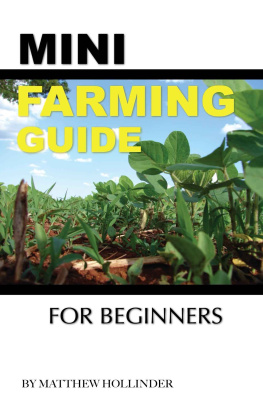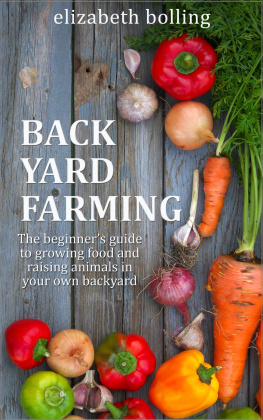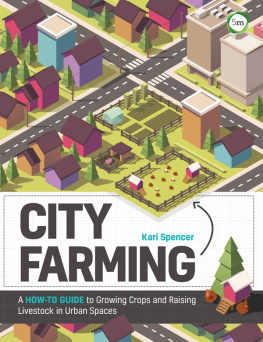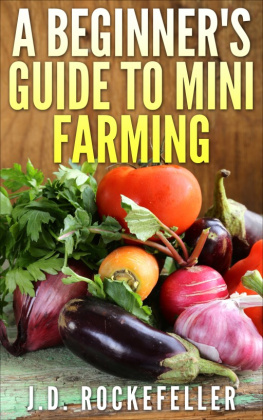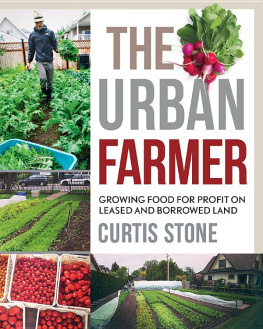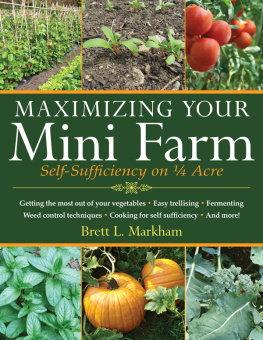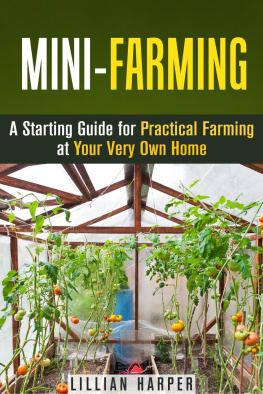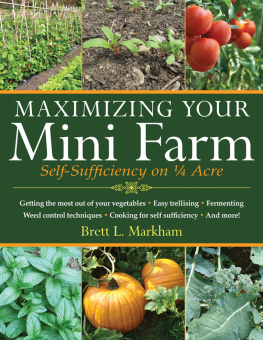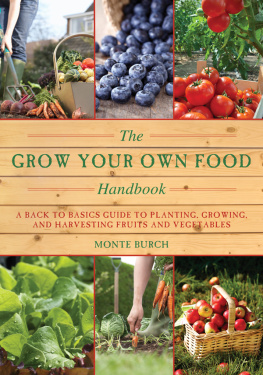Mini Farming Guide : F or Beginners
Copyright 2015 Conceptual Kings.
All are rights reserved.
This book or any portion thereof may not be reproduced or used in any manner whatsoever without the express written permission of the publisher except for the use of brief quotations in a book review.
With rising nation-wide concerns about the presence of GMOs and pesticides in crops, as well as concerns about food cost, more and more people across the United States are gaining an interest in growing their own fruits and vegetables. As a result, mini-farming, is now becoming a growing trend in both rural and urban areas around the country. Those living in cities with decent-sized balconies and access to rooftop gardens are now growing and harvesting just as much food as a small, quarter-acre farm in a country setting.
Though th is kind of lifestyle is the desire of many people of all walks of life, not all of them are entirely sure of how to get started. Many questions should be asked ahead of time. Is this going to be expensive? What kind of equipment will we need? What crops could we plant? Are there specific techniques to planting these crops? And, finally, is it possible to share the results with the local community?
Whether youre starting this off as a hobby, to minimize your budget, or a little bit of both, this book will start you off on mini-farming the right way. You will get advice on everything from the right types of planters to use to natural methods of pest control and even tips for expansion when the time comes. No matter what your reason is for taking on this hobby, this book is sure to point you in the right direction.
Starting a Mini-Farm
There are many different names for mini-farms: micro farms, sustainable farms, hobby farms, and homesteads. No matter what you call them, they all serve the same purpose; providing their growers with enough fruits and vegetables for year-round use.
There is a slight misconception that a person has to be quite wealthy or at least have a very substantial income in order to maintain a true mini-farm. The truth is that many who already do this are persistent DIY-ers. All of their planters, garden beds, fences, and even fly traps are built entirely by hand. They make all of their own fertilizer and Additionally, much of the equipment that they use for their homestead was already used, but still in great working condition, when they purchased them. Therefore, is much cheaper than it would have been otherwise.
That being said, it is extremely important to think things through before officially starting your mini-farm. Be sure that you already have a decent amount of space available for growing whatever crops you may need. At least a quarter of an acre is substantial enough to keep a significant amount of fruits, vegetables, and herbs. Additionally,
Planters and Beds
There are a few options for planters and garden beds that you can use to start off your mini-farm. It all depends on how much room you have and how many crops you intend on planting. Some of the following boxes are better fit for a backyard, while others can easily fit onto a balcony or patio in an urban or suburban setting. If a rooftop garden space is available where you live, any of the following can work. Additionally, remember not to let the prices for these boxes throw you off. If you already enjoy, or are gaining an interest in, building things by hand, you can easily build any of them on your own.
Raised garden beds are one of the best things that a rural mini-farm owner could ever have. Not only do they raise the soil temperature by about 10 degrees, which extends t he growing season for crops, they also have good drainage and soil aeration. Additionally, because seeds are plotted closer together. Depending on the size you choose, the prices of these beds can range between $150 and $500 in the United States.
For those who live in an apartment space with a balcony, or even have access to a rooftop garden, rolling planters are their go-to option. They are smaller in size than a raised garden bed, can be moved around as necessary, and can fit in any space ranging from a small patio to a driveway. Prices for these planters are typically between $150 and $250.
Standing gardens, or elevated table gardens, also have a number of incredible benefits. They are also an ideal choice for those with handicaps or back problems, and can keep your growing crops safe from small children or unruly pets. Many also come with a shelf on the bottom to give easy access and for your tools. On average, standing gardens are priced between $120 and $300.
Irrigation Kits and Other Equipment
Though most people would use a basic water canister, mister, or sprinkler to water their crops, they can become wasteful. There is always risk of overspill and high evaporation, so crops dont get as much as they should. Drip irrigation kits, which will typically fit inside a raised garden bed, will release water at soil level over a longer period of time. These typically between $40 and $50 depending on the size.
As with any other farmer or gardener, a great deal of additional equipment is needed. This includes shovels, hoes, pitchforks, a wheelbarrow, and even a manure spreader for your fertilizer. As said before, these items can be bought either new or used. For those who live in more rural areas and have a small amount of land to cultivate, some gasoline-powered machinery is needed. This includes mini tractors, cultivators, and harvesters.
Hydroponics
There is also another method of growing plants that does not require any of the traditional potting or gardening soil at all. Instead, it relies entirely on a nutrient rich solution water solution and the support of an alternative growing medium such as gravel or sand. Many growers turn to the hydroponics method for multiple reasons. It is believed to make crops more nutritional and better tasting, and it is easier for the grower to control the amount of water and nutrients given to their crops. Additionally, it is an ideal way to save space if you dont have a lot of room for gardening.
Though you can always buy a hydroponic kit, they are typically very expensive. The cheapest and most basic designs can cost you $250, while others can run as high as $600. If you are on a tight budget, but still want to pursue this method, there are several ways to make this type of planting system on your own. One of the simplest and cheapest ways involves buying a large plastic storage container, cutting holes in the lid, and fitting in mesh pots with an alternative growing medium. Be sure that an aeration method, such as an aquarium pump and air house, is placed inside and keep track of the water levels in your kit.
Starter Plants
Now that you have your planters and watering kits in place, you can start to put all of your seeds in place. Vegetables, grains, and kitchen herbs are, without a doubt, the best things to start off with when beginning your mini farm. Some of the best starter plants include different types of potatoes, tomatoes, zucchini, garlic, corn, barley, and carrots. Good options for starter kitchen herbs include basil, rosemary, and thyme. Some of these crops can be grouped together in the same box as a way to supplement each other. Basil can give tomato plants extra flavor, and lettuce is known to tenderize radishes.
Keep in mind that different boxes can also have different food purposes depending on what you choose to plant together. One box could be for salad ingredients, another could be for your kitchen herbs or grains, and a third could be for leafy greens meant for smoothies. Several companies that sell raised garden beds and planters also sell different packs of seeds with these very purposes in mind. The company, Mini Farm Box, sells ten different seed packs with names such as Summer Salsa Collection, Baby Food Garden, and Dinner for Beginners.

